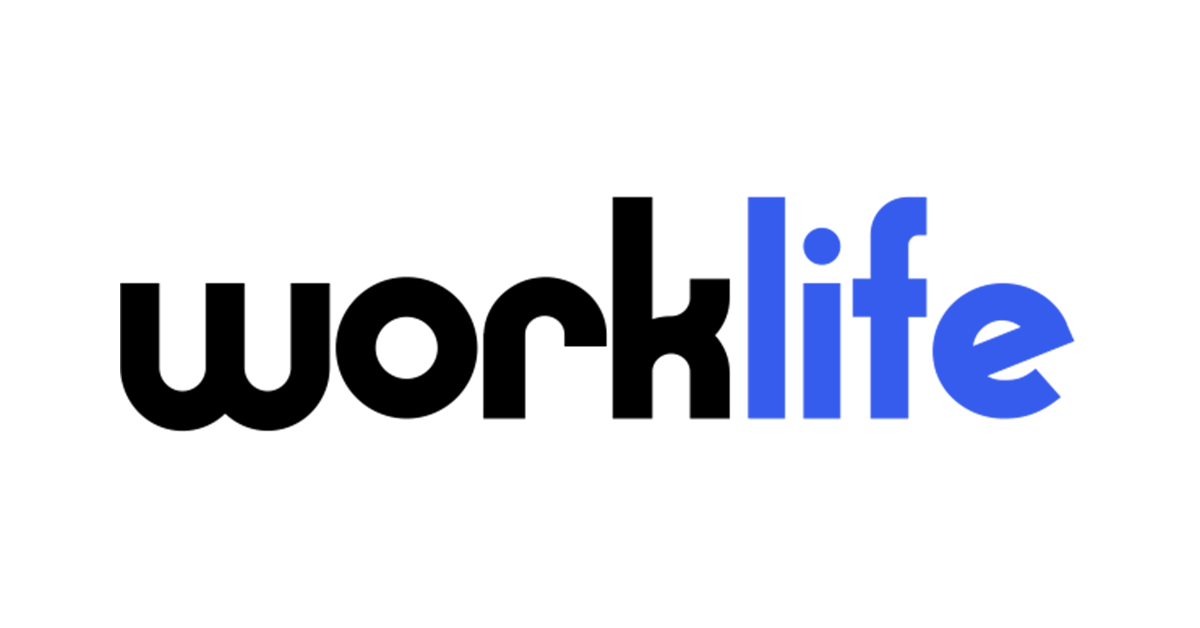Promoting the longevity of your employees means discovering methods for nurturing happiness, embracing strengths and developing an employee engagement strategy that works at every stage in an employee’s lifecycle.
You can improve the productivity and satisfaction of your employees by creating a phased approach to your organization’s employee lifecycle. Predict and prepare for the road ahead in a way that encourages your employees to reach their full potential and remain loyal to your organization and the role they play in its success.
Why is employee relations important to the employee lifecycle?
Employee relations (ER) have traditionally been “forgotten” in the employee lifecycle model. ER is seen as a “problem-solver” rather than a key driver of the employee experience. To leave it out of the lifecycle is to ignore a HUGE element of the experience that employees will feel while they make their way through their own unique lifecycle — at whatever speed that may be.
Think of the customer experience: companies that think they will never need to help solve a customer issue are going to have some pretty upset customers when they realize there’s no customer service to help them. This is why it is essential that as you discover a way to develop and improve your employee lifecycle strategy you compare it with your employee relations strategy and determine whether there need to be changes made to ensure they are both cohesive and work together for the success of your company and for every single employee.
What is the employee lifecycle model?
As HR professionals, your organization’s connection to its people is one of the most important assets to support. The employee lifecycle is the total journey your employees take throughout their entire time within your workplace. From the moment they’re recruited, become a new hire and move on —whether that be six months later or by retiring 40 years down the road — each stage of that voyage becomes a part of the employee lifecycle.
The employee lifecycle model is the organizational framework that your company takes to visualize each stage of the lifecycle to boost employee engagement and implement strategies that will support each employee and increase the likelihood of retention. The goal of this model is to equip employees with continuous learning opportunities and growth within the company while also providing them with security and stability in their career progression.
Your strategy should focus on a different engagement method for each stage, ensuring the well-being of your team and helping guide them successfully through the life of their career.
The stages of the employee lifecycle.
Your organization’s outline of employee lifecycle stages may differ from other companies, however, many follow somewhat similar journeys. We don’t recommend simply “copying” the same employee lifecycle the same way we wouldn’t suggest using the same customer journey or customer experience of another organization. Typically, however, you can expect a base framework of the following stages of the employee lifecycle. From there, you can build out based on the unique lifecycle of your company.
- Attraction
- Recruitment
- Onboarding
- Retention
- Development
- Separation
We’ll go into more detail about each of the stages of the employee lifecycle, what’s involved in each stage, their significance to the journey and how you can begin to implement them into your strategy below.
Attraction

Prior to the recruitment process, your organization should include an attraction stage as part of your employee journey. Potential new hires will learn about your company and be motivated to apply for a position or not within this first stage — so it’s an important step! You want to make the best first impression so that you encourage the right prospective employee to see your company as a potential new employer.
You can begin building a strong attraction stage within your employee lifecycle by checking all of the branding and messaging that your organization has created. We know Human Resources (HR) or Employee Relations (ER) professionals don’t normally have much to do with the marketing department of a company, however, take the time to review this material and provide feedback that can promote a strong image. Reevaluate your recruitment marketing materials and update them to match or catch the eye of your target recruits. This is the opportunity to promote a positive culture and take note of any benefits and opportunities that may attract new talent.
If you want to take your strategy even further, implement the atmosphere of attraction into every stage in the employee lifecycle. If your current, long-term employees are happy within their roles and feel engaged and supported by great company culture, they’re more likely to share their happiness with their networks and others which increases the opportunity for the best talent to find and come to you with their interest.
Recruitment
As the second employee lifecycle stage, recruitment encompasses the process of completing a descriptive and engaging job description, the application process and the rest of the journey that results in a new hire on your team. It should include your company’s website and career page, the social pages you choose to list on and the wording you use in communication with potential recruits throughout that first point of contact until they sign their job offer.
The recruitment process can be a lengthy experience, especially if you tend to have a high turnover of staff or struggle with developing the best recruitment plan for your organization. It might also be completely out of your own control. ManpowerGroup reports that 3 out of 4 organizations are currently struggling to recruit the right talent because of shortages. The pandemic has left an uneven economic growth that has resulted in high demand for skills with fewer people available to fill those shoes. How you recruit your new hires is, therefore, more noteworthy than ever.
The recruitment stage is important to the employee lifecycle because it takes the right talent with the best skill set to expand your organization. You can decrease the amount of turnover and increase productivity through a strong recruitment process that emphasizes an excellent company culture, the potential for growth and the employee experience.
Measure the success of your recruitment plan by keeping track of applications, interviews and job offers. Promote stronger success during this stage by requesting feedback from current employees on their own recruitment within the company and offering referral bonuses.
Onboarding
Onboarding is the third stage of the employee lifecycle. According to Forbes, 20% of employee turnover will happen during the first 45 days of employment and costs organizations up to $18,000 to rehire someone. Therefore, having a strong onboarding process is necessary to ensure new hires are happy, supported and set up to be successful in their new roles.
Part of the onboarding process also involves providing enough resources and information to new recruits that will encourage comfort during the first few days of employment. Communicate often while letting new hires know their first day of work, what to wear, who to report to, directions to the office if necessary, when their first payday will be and what paperwork they will be required to fill out. During onboarding, which Forbes also mentions should be around 90 days in length, touch base with the job description and have everything set up that the employee will need so there aren’t long periods of lingering.
Throughout your onboarding stage, request feedback from all new hires and have a conversation about whether they feel ready to move forward with the next stage in the employee lifecycle or if they need more time. There should be a discussion about the company values and an in-depth understanding of expectations, employee best practices and more. Onboarding doesn’t need to end after a few months. HR and ER should continue to follow up with employees throughout the first year or more.
Retention
The retention stage can either be the fourth stage or the fifth stage in an employee lifecycle strategy (you can choose to place the development stage here instead). Retention is the stage where employees are committed to their company and ultimately decide whether they want to stay with them for a long time. Here is where you want to be able to predict the needs of your top employees so you can continue to encourage their productivity and movement within the company.
People leave when things go wrong or when they lose trust in their employer because an issue has been handled improperly or the culture becomes toxic. It’s expensive to lose employees during the retention stage because they’re already developed a strong connection to their work and have knowledge and skill sets that have become critical to their role and can take years to recreate with another employee. Having a trusted ER team that can handle large and small issues will drive retention and ensure employees continue through their employee lifecycle.
Retention has become an increasingly important stage of the employee lifecycle in recent years. The COVID-19 pandemic has led many employees to the decision to leave their jobs or change careers. According to Gartner, total employee turnover is expected to jump by 20% compared to the average prior to the pandemic. Values that weren’t as important or considered “perks” in the 2010s, such as the flexibility to work from home have become a necessary job component today.
There are many factors that affect retention rates such as workplace culture, job security, and company values. What motivates your employees to come to work every day? You can find out the answer to this question and many others that will help you retain your employees and continue engaging them by requesting feedback and having regularly scheduled conversations.
Alas, it’s not always possible to retain every employee, especially when they are determined to go or the time comes to retire. You should be ready for the unexpected or the scheduled departure of an employee by analyzing the behavior of your staff, keeping conversations open and having employees keep written documents of the knowledge they’ve acquired over the year that can be passed onto the next person.
Development
Development is either the fifth or fourth stage in the employee lifecycle model. For a large number of employees in this ever-evolving century, remaining stagnant in their careers is undesired. We want to be challenged in the work we do and recognized for when we do it well. This is why it can be beneficial to provide strong employee recognition and a great work-life balance or they can offer an excellent benefits package as part of your employee relations goal.
There are many career paths that don’t require development, however, if there is a place in your organization for movement, it can be beneficial to map it out for employees. How can you encourage development within your organization and allow employees to move through this stage with ease? There are many actionable steps you can take, such as providing opportunities for professional development courses, bursaries for college courses, offering extra assignments and the chance to learn or shadow others in different areas of the organization.
place in your organization for movement, it can be beneficial to map it out for employees. How can you encourage development within your organization and allow employees to move through this stage with ease? There are many actionable steps you can take, such as providing opportunities for professional development courses, bursaries for college courses, offering extra assignments and the chance to learn or shadow others in different areas of the organization.
Many HR managers and executives aren’t aware of the knowledge, talent and skills that are developing within their employees. The recent growth of “internal marketplace” talent platforms has combat this by highlighting what employees are interested in and how they contribute to projects and initiatives outside their normal scope of work. Stay in touch with each employee whether or not they have a reason to come to HR or ER or not. Continually assess their abilities and offer opportunities for growth when you find strengths or skills they’re passionate about pursuing.
Separation
As the last stage in the employee lifecycle, separation is eventual for every employee at some point in the cycle. It’s essential that you treat the separation stage as just as important as every other stage in the lifecycle and not let it become simply a sign-off or “sayonara” when an employee leaves.
The separation stage is essential to the lifecycle of an employee because it makes an impact on the future abilities of the leaving employee as well as your organization. It’s stressful to lose a job even when it’s voluntary. That ripple effect that can be created once an employee leaves can be a negative one if they haven’t left on the best terms or feel like they must not have been valued enough in the first place. A company will then have to deal with the aftermath of the exit of current employees, the reputation of the organization and even its ability to recruit new talent.
You can maximize the success of the separation stage by implementing some actionable steps such as requesting an offboarding survey/feedback, conducting an exit interview, and keeping the conversation open about when and how the employee will be leaving. If the separation is sudden, as in you’ve been forced to fire them, make sure you have a plan set in place about how this will happen. The idea is to minimize its effects on the rest of your staff and their position within their own lifecycle. It’s also important to have employees leave with the best impression of your company so that they can continue to talk about their role positively. It can be frustrating when someone leaves abruptly from an organization, however, it’s vital that these feelings aren’t put on the separating employee.
The benefits of implementing an employee lifecycle strategy.
A well-thought-out employee lifecycle strategy can improve the engagement and retention of employees. The benefits of implementing an employee lifecycle strategy are many. It can reduce employee turnover rates, enable new hires to be more productive faster and help make sure that employees receive timely feedback on their performance.
There are three main advantages that come from having an employee lifecycle strategy:
The first is that it can support an organization in maintaining a more organized workforce. This means that there will be fewer problems caused by not knowing where people are in their lifecycle or what they are doing at any given time.
The second advantage is its ability to establish a more productive workforce, which means less downtime and more time spent on work-related tasks.
The third advantage, which is definitely not the last you will discover within your organization, is the employee lifecycle strategy’s ability to retain employees for longer periods. Strong employee retention decreases the cost of recruiting and retraining employees.
Continually staying up to date with where each employee is in their own lifecycle will allow you to better understand their needs and predict when they will move on to the next stage in their cycle. This will let your team be better prepared to guide and streamline this transition.
Having a complete understanding of the employee lifecycle strategy from everyone within your organization, from executive management all the way down to new team members, is also important. It’s excellent that HR or ER is in agreement, but you can maximize the benefits of the employee lifecycle when everyone is comfortable with the process.
Don’t forget the feedback, feedback, feedback.
Remember to continue to include employee feedback as a core driver in every stage as you implement and continually improve your employee lifecycle strategy. Employee feedback is a critical component of the employee lifecycle model. It is what steers the process and helps to improve the employee experience.
It also helps companies to know if they’re doing well or not with regard to HR policies. Employee feedback is a key tool in this process because it provides valuable insights into how employees feel about their employer and possibly how HR and management can improve their own performance. Whether the feedback is formal or informal and positive or negative, you should continually use it to adapt your employee lifecycle strategy so you can retain more employees, perfect the onboarding process, and essentially promote the success of the entire strategy and organization.
Advanced workplace solutions to improve your processes.
Implementing an employee lifecycle strategy doesn’t need to be complicated or left completely in your hands. There are workplace solutions that can be incorporated into your business systems to streamline the process and help manage employee engagement and experiences throughout every stage of the lifecycle.
How can HR Acuity help your organization?
A big part of a successful employee lifecycle is when it’s followed not stage-by-stage but by keeping a bird’s eye view of how each stage is connected to each other in the overall journey. Promoting company culture needs to be included across each stage to ensure that every experience translates into employee satisfaction.
HR Acuity’s Employee Relations Solutions provides a platform that can be tailored to the unique needs of your organization or industry. You can document data from every employee to continually know where they are in the employee lifecycle and solve any issues that arise so that the employee experience continues to remain positive. We provide better tools so you can create, implement and manage your employees regardless of which stage they’re in.
If you’re ready to implement an employee lifecycle strategy, use the above steps as a guideline as you develop and master a journey that can be tailored to specific employees when needed. Remember, your lifecycle will likely change as employees and directions change. Keeping track of key metrics and employee performance will let you know when it’s time to adjust. Continually assess where your employees are and request and accept feedback throughout their journey.
Want to try a free demo of the HR Acuity software that will support you as you manage your employee relations? Contact us to request your demo.




